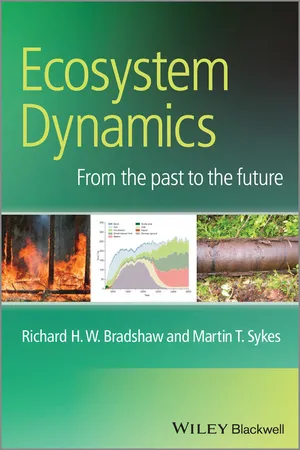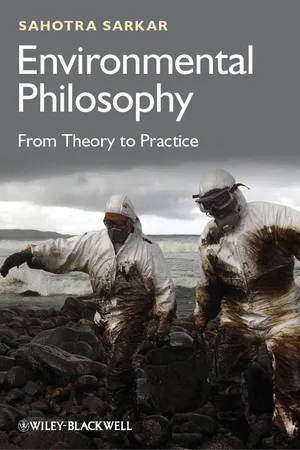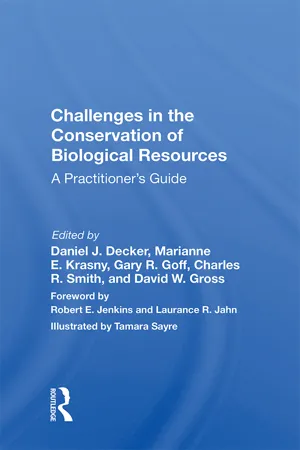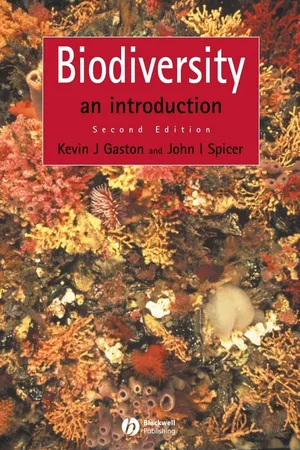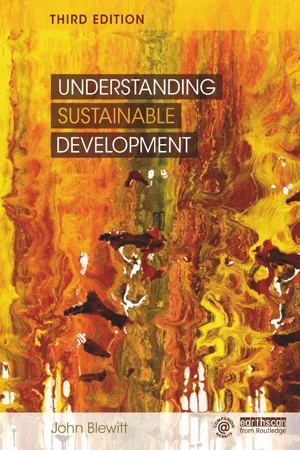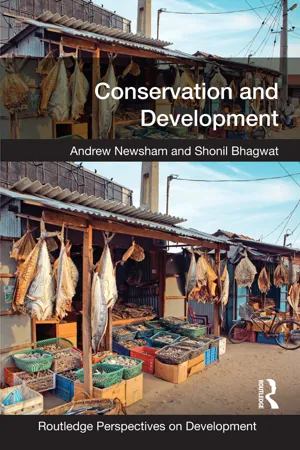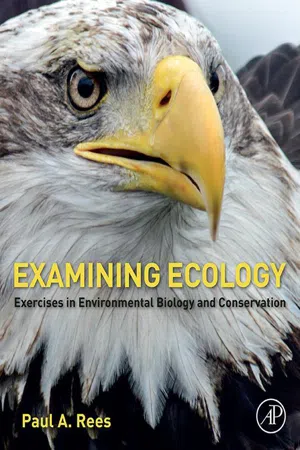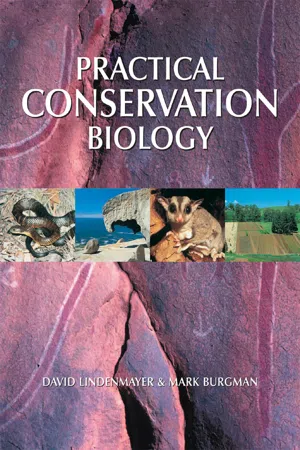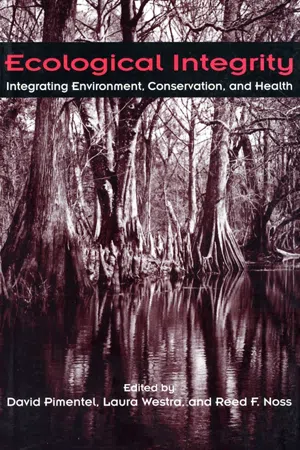Biological Sciences
Conservation
Conservation refers to the protection, preservation, and sustainable management of natural resources, including biodiversity, ecosystems, and wildlife. It aims to maintain the balance of ecosystems and prevent the extinction of species by addressing threats such as habitat destruction, pollution, and climate change. Conservation efforts often involve scientific research, policy development, and community engagement to promote environmental sustainability.
Written by Perlego with AI-assistance
Related key terms
Related key terms
1 of 4
Related key terms
1 of 3
10 Key excerpts on "Conservation"
- eBook - ePub
Ecosystem Dynamics
From the Past to the Future
- Richard H. W. Bradshaw, Martin T. Sykes(Authors)
- 2014(Publication Date)
- Wiley-Blackwell(Publisher)
Chapter 9 Conservation‘Earth provides enough to satisfy every man's needs, but not every man's greed.’Mahatma Gandhi9.1 Conservation as we know it
Nature Conservation is a topic in which biological theory rubs shoulders with practical management, and there are many diverse opinions about appropriate targets, processes and timescales. In scientific terms, biological Conservation or Conservation biology has been defined in a number of ways. According to Soulé (1985), Conservation biology ‘addresses the biology of species, communities and ecosystems that are perturbed, either directly or indirectly, by human activities or other agents’. The term was first used in 1978 at a conference on Conservation biology at the University of California in San Diego. However, somewhat earlier in 1968, an Elsevier journal, Biological Conservation, began publishing papers covering a wide range of subject areas closely associated with Conservation. In its first editorial statement in 1968, the editors described 30 subject areas, including history, man and the environment, biosphere maintenance, ecosystem disturbance, population dynamics, threatened species, reserves, parks and botanical gardens, exotic species, economics, legislation, education and Conservation in various forms. So Conservation can be many things, but naturally it involves humans in some way, which may be self-evident but is perhaps worth emphasising.So what does the future hold for biodiversity and for the attempts to conserve it? The current answer is probably that the situation is dire. The Millennium Ecosystem Assessment (MEA, 2005) projects the future extinction rate of species to be 10× higher than the current rate, which is itself 1000× higher than the rate estimated from the fossil record (Figure 9.1 - eBook - ePub
Environmental Philosophy
From Theory to Practice
- Sahotra Sarkar(Author)
- 2011(Publication Date)
- Wiley-Blackwell(Publisher)
The term “biodiversity” was only introduced in 1986 as a contraction for “biological diversity.” Many commentators have analyzed the synergistic growth of the use of the term “biodiversity” and the growing popularity of Conservation biology as a discipline. Conservation biologists, particularly in the United States, felt that they were creating a brave new science. While this claim has little factual support (nature Conservation, including the Conservation of large complements of species, has a long history), it led Conservation biologists to theorize about “biodiversity” while largely ignoring earlier attempts by ecologists to formulate a quantitative measure of ecological diversity. 2 One consequence of this history is that the best way philosophers have been able to make sense of the concept of biodiversity (which remains problematic when scrutinized carefully, as this chapter will show) is to view it in the context of the emergence of Conservation biology: biodiversity is simply the goal pursued by the practice of Conservation biology. 3 A wide variety of practices fall under the rubric of Conservation biology, which is a hybrid discipline incorporating insights from many areas of biology relevant to the persistence of biota and, arguably, also insights from the social sciences and the humanities (see below). The most relevant area within biology is ecology, which studies the interactions of species and individuals with each other and with the physical environment. The main differences between Conservation biology and ecology are that the former embraces many other disciplines (as noted earlier, and emphasized below) and is explicitly a goal-oriented discipline aiming to ensure the persistence of biodiversity into the indefinite future - eBook - ePub
Challenges In The Conservation Of Biological Resources
A Practitioner's Guide
- Daniel J. Decker(Author)
- 2019(Publication Date)
- Routledge(Publisher)
By focusing on practitioners in land-management, land-use planning, and natural resource management, this book is a continuation of a significant departure from tradition begun by the scientific community in the 1980s. During the last decade, some scientists explored a route that was different than that traveled by their predecessors in prior decades to address Conservation of biological diversity. These leaders realized that, alone, ecological knowledge of species, populations and habitats was of little use; such knowledge needs to be placed in the context of comprehensive, real-life management plans. This kind of thinking gave rise to new synthetic science disciplines such as Conservation biology. For example, Michael Soule (1985: 727), whom many regard as the father of Conservation biology, defines Conservation biology as "...a new stage in the application of science to Conservation problems." We believe this book makes a useful contribution because it helps clarify the interdisciplinary dimensions of efforts to conserve biological resources and the potential roles practitioners can play. We believe that this is an essential move into a new theater of activity aimed at a set of key actors vital to greater success in conserving biological resources for future generations.The Thesis
Our thesis is that Conservation of biological resources must have grass-roots professional support to become a reality in the U.S., especially in regions where the majority of land is in private ownership. In the near future, most of the contiguous U.S. will be subsumed in the "highly developed" category of land use. This once was a fairly limited area of the country, but no more. Even in areas of seemingly wide-open spaces or expansive forests, pockets of intense human development exist, and the uses humans make of the natural environment threaten biological resources—species, communities and natural processes—that occur there.In places like New York State for example, the majority of open or forested land, some 10 million hectares, is owned by over 500,000 private landowners. Furthermore, this land is spread across more than 1,000 local government jurisdictions, each having the power to impose its own regulations on land use, with only minimal requirements from state government. Thus, we regard the multitudes of people at the local level as having the greatest impact on biological resources. Given that geopolitical situation, the participation of professional land managers and land-use planners will be particularly vital in influencing local decisions about land use that will affect the integrity of biological resources for decades to come. Possibly the most important fact in Conservation is this:the future of our nation's biological resources lies in the collective hands of thousands, perhaps millions of people in their roles as private landowners, professional land managers, land-use planners, private Conservation organizations, educators, and public officials. - eBook - ePub
Biodiversity
An Introduction
- Kevin J. Gaston, John I. Spicer(Authors)
- 2013(Publication Date)
- Wiley-Blackwell(Publisher)
This is the heart of the Convention, establishing the framework and context for the subsequent Articles, and its overall sense of direction. Indeed, right at the outset the Convention recognizes some of the main strands that must be involved in the future interaction of humanity with biodiversity. Biodiversity must be maintained, if only because to fail to do so would be to imperil human existence through the consequences for direct and indirect use (cf. Chapter 4). This can only be achieved through sustainable use, and only if the benefits arising from the use are fairly and equitably distributed. This reflects a general acceptance that there are social contexts to Conservation actions.Table 6.1 The 42 Articles of the Convention on Biological Diversity.1 Objective 2 Use of terms 3 Principle 4 Jurisdictional scope 5 Cooperation 6 General measures for Conservation and sustainable use 7 Identification and monitoring 8 In-situ Conservation 9 Ex-situ Conservation 10 Sustainable use of components of biological diversity 11 Incentive measures 12 Research and training 13 Public education and awareness 14 Impact assessment and minimizing adverse impacts 15 Access to genetic resources 16 Access to and transfer of technology 17 Exchange of information 18 Technical and scientific cooperation 19 Handling of biotechnology and distribution of its benefits 20 Financial resources 21 Financial mechanism 22 Relationship with other international conventions 23 Conference of the Parties 24 Secretariat 25 Subsidiary Body on Scientific, Technical and Technological Advice 26 Reports 27 Settlement of disputes 28 Adoption of protocols 29 Amendment of the Convention or protocols 30 Adoption and amendment of annexes 31 Right to vote 32 Relationship between this Convention and its protocols 33 Signature 34 Ratification, acceptance or approval 35 Accession 36 Entry into force 37 Reservations 38 Withdrawals 39 Financial interim arrangements 40 Secretariat interim arrangements 41 Depository 42 Authentic texts The emphasis on equitable sharing of benefits arising from the utilization of genetic resources reflects concerns that in the past such resources belonging to one nation have been exploited by one or more others, with no recompense. Although examples usually relate to the exploitation of the genetic resources of developing nations by developed ones, where its consequences are at their most severe, the problem is more widespread. Thus, for instance, Svarstad et al. (2000) relate how the hyphomycete fungus Tolypocladium inflatum - eBook - ePub
- John Blewitt(Author)
- 2017(Publication Date)
- Routledge(Publisher)
6 Conservation and sustainable developmentAims
This chapter explores the relationship between Conservation and sustainable development, revisiting issues relating to population, resource use and human beings’ impact on what is often termed the natural world. More specifically, efforts to preserve the natural landscape and, more latterly, a wide range of wildlife habitats brings into focus a range of policies and practices that have seen conflicts, controversies and a considerable degree of debate. The friction induced by the imposition of Western notions of Conservation and stewardship on other lands has invariably led many to address and readdress both the rights of indigenous peoples and the very nature of economic development, urbanization and sustainability. This friction is practical and political in nature and although it seems that dialogue is leading to progress and accommodation, we are witnessing, indeed causing, a sixth massive extinction of many of the species with whom we supposedly share the planet.Here, there and everywhere
Ecologist Marc Bekoff and Conservation social worker Sarah Bexell (2010) perhaps state the obvious when they write that human beings are here, there and everywhere, but importantly they add that because of our short lifespans we seem removed from the nuances of natural evolutionary cycles. We are not here long enough to see what is going on in the long term and, additionally, we can negatively affect ecosystems even when we are not physically present in them. Our penchant for technical fixes also gives us a false sense of security and perhaps of optimism, and we rarely stop to think that ‘we’re a species whom almost all other species could easily live without’ (Bekoff and Bexell, 2010: 70). Michele Soulé (2002), a pioneer in the field of Conservation biology aptly put it when he noted that human beings are certainly the dominant species, but we are clearly not a keystone species, for when you remove a keystone species biodiversity itself collapses. When we humans are added to an ecosystem, as the history of human migration and imperialism shows clearly, biodiversity collapses. Unfortunately, we can’t live without these other species and our actions are a direct cause of their rapid decline and frequently their extinction. Despite captive breeding programmes, transdisciplinary research projects, Conservation initiatives, including moving people and animals to different locations and an array of political and economic measures, we continue to witness an alarming decline in global biodiversity. Although these ‘band aid’ projects are undoubtedly quite necessary, they are clearly not sufficient because the root problems of overpopulation, over-consumption, speciesism and ignorance seem to be deeply ingrained in human psychology. Bekoff and Bexell continue: - eBook - ePub
- Andrew Newsham, Shonil Bhagwat(Authors)
- 2015(Publication Date)
- Routledge(Publisher)
In essence, Conservationists cannot afford to ignore the ways in which societies are inseparable from the nature that is the object of Conservation efforts. Conservation, from this standpoint, cannot solely be about separating landscapes and protecting them from the destructive tendencies of humans, because of the pervasive influence of society upon global ecology. The ramifications of this kind of Conservation for human wellbeing are revisited in Chapter 9, in the context of protected areas which, conventionally, have sought to demarcate and maintain ‘wild’ landscapes free from human presence; or as free as practicably possible. Nor can it be about trying to ensure that things stay the same, trying to maintain an ecosystem in one stable state. Partly, this is a question of values: what value is ascribed to different ecosystem states, and is one state privileged over another in terms of its Conservation value? Which nature is worth conserving? Conservation cannot be based on an understanding of nature which is static and separate from the human beings. An often cited but very clear example of the limitations of such a strategy takes us back to our consideration of North American forests. Managing these in such a way as to maximise the levels of biodiversity within the forest is what can lead to the huge forest fires that often feature as international news stories, often on a yearly basis (for instance, in California). As we have seen, fire is a necessary mechanism for the reproduction of some species, but it is also an inevitable consequence of trying to maintain biodiversity at a climax state. If the object is to maintain the forest at this climax state, it is self-defeating - eBook - ePub
Blueprint 2
Greening the World Economy
- David Pearce(Author)
- 2013(Publication Date)
- Routledge(Publisher)
10 Conserving Biological Diversity Tim Swanson Maintenance versus PreservationThe global loss of biological diversity, or “biodiversity”, is currently one of the major problems facing the world. It was recognized as such in the publication of the World Conservation Strategy in 1980. In the interim period, several movements have developed for the purpose of preserving the remaining areas of significant biological diversity, i.e. natural habitat. These include the establishment of national parks and wilderness areas, the arrangement of “debt-for-nature” swaps, and even a proposed international convention for the development of an international fund for the Conservation of biological diversity.These measures have attained a certain amount of success. For example, almost 5 per cent of remaining tropical forest has received some form of legal protection. On the other hand, they can only have a very limited amount of success, because they do not address the forces which generate the losses in biological diversity. For this reason, the rate at which unprotected natural habitats are being lost remains largely undiminished.Preservation has been an approach to saving natural habitat which has been focused on the “tip of the iceberg”. It is necessary to broaden this approach in a way that will address the importance of maintaining the 95 per cent of natural habitat which is currently unprotected. In addition, the strategy of preservation is subject to concerns about its long-term viability. This is because a promise to protect a designated area is much more readily kept while other areas are available for development. At current rates of exploitation, the entire remaining unprotected natural habitat will be subject to some development within the next century. Preservation areas will come under increasing pressure as this buffer stock is eroded.Finally, the idea of preservation has been promoted in a way which renders it antithetical to development. The maintenance of natural habitat has been viewed as wholly inconsistent with the development process. In part, this is necessarily true, but it is not always so. It is also possible to develop natural habitat areas in ways which allow local communities to acquire significant uses of those resources, while also maintaining the biological diversity of the habitat. This is the core of the idea of maintaining natural habitats by harnessing the forces for development, rather than battling against them. Constructive utilization of the resources in natural habitats can act to provide the incentive to keep them. This is the means by which the 95 per cent of remaining natural habitat which is unprotected might yet be maintained. - eBook - ePub
Examining Ecology
Exercises in Environmental Biology and Conservation
- Paul A. Rees(Author)
- 2017(Publication Date)
- Academic Press(Publisher)
Chapter 9Conservation Biology
Abstract
The exercises in this chapter are concerned with the Conservation of plants and animals, their sustainable use, the design of nature reserves and the role of zoos in Conservation.Keywords
Ethics; fishing regulation; game ranching; island biogeography; nature reserve design; sport hunting; tropical forest; zoosThis chapter contains exercises concerned with the rational and sustainable use of the world’s biological resources.Intended Learning OutcomesOn completion of this chapter you should be able to:Explain the importance of tropical forests as a resource.Explain the risk posed to animals by road drainage systems.Explain how mesh regulation helps to conserve fish stocks.Compare the profits made from game ranching with those made from traditional cattle ranching.Analyse the economics of wildlife resource utilisation.Explain how the biology of a species may affect its long-term survival.Use mathematical methods to study the relationship between area and perimeter length in protected areas.Identify the challenges associated with the use of reintroduction as a Conservation tool.Recognise the range of threats to the future survival of a species.Discuss the role of zoos in Conservation.Discuss the ethical issues arising from a variety of ecological studies and ecosystem management strategies.IntroductionConservationBiological Conservation has been defined by Spellerberg and Hardes (1992) - eBook - ePub
- David D. Lindenmayer, Mark M. Burgman(Authors)
- 2005(Publication Date)
- CSIRO PUBLISHING(Publisher)
Conservation strategies are often based on setting aside land for the protection of species and ecosystems. The development of reserve systems in most countries has been undertaken on an ad hoc basis, targeting areas for which there is an obvious social and political mandate, and areas that are unlikely to provide immediate productive benefits for agriculture, forestry, mining, urban development and human infrastructure. Effective biodiversity Conservation should move beyond protected areas to explore different land management strategies to conserve species and communities. This chapter outlines some options. Protected areas The idea of setting aside areas for hunting, recreation and timber protection has been established in Europe for many hundreds of years (Nelson, 1991). The original notion of wilderness was of a place where animals lived and could be hunted (Shea et al., 1997; see Box 1.5). Few protected areas were legislated before 1900, but significant examples include Yellowstone National Park in the USA (established in 1872) and Royal National Park in Sydney (established in 1879). The Australian Association for the Advancement of Science lobbied successfully for a national park in Western Australia in 1893, and in 1894 they succeeded in forming a large 65 000-hectare park in the centre of the Jarrah forest in Western Australia, but failed to have the park properly vested. The purpose of the park was reclassified to ‘Timber – Government Requirements’ in 1911, following pressure from the timber industry (Ride, 1975). Other smaller parks were created around the same time and were more permanent. Most of the northern Jarrah forest was dedicated as State forest in the late 1920s to protect it against uncontrolled clearing and unmanaged timber exploitation - eBook - ePub
Ecological Integrity
Integrating Environment, Conservation, and Health
- David Pimentel, Laura Westra, Reed F. Noss, David Pimentel, Laura Westra, Reed F. Noss(Authors)
- 2013(Publication Date)
- Island Press(Publisher)
Conservation Biology 5:261–262.Wilson, E.O. 1992. The Diversity of Life. Cambridge, MA: Belknap Press of Harvard University Press.Passage contains an image
CHAPTER 12
Health, Integrity, and Biological Assessment: The Importance of Measuring Whole Things
James R. KarrFor millennia, nature––specifically living systems––provided food and fiber to nourish and clothe us and materials to build us homes and transport. Living systems conditioned the air we breathe, regulated the global water cycle, and created the soil that sustained our developing agriculture. They decomposed and absorbed our wastes. Beyond practicality, nature fed the human spirit.But pressure on nature from the impact of 6 billion humans is taking its toll. Living systems worldwide are collapsing (Woodwell 1990, Karr 1993, Karr and Chu 1995, Vitousek et al. 1997, Lubchenco 1998). Changes in Earth’s biota caused by human actions range from indirect depletion caused by altering Earth’s physical and chemical environment to direct depletion of human and nonhuman life (Karr and Chu 1995).We have not always had such devastating effects. When modern humans emerged some 200,000 years ago, changes we caused happened slowly, and over relatively small geographic scales. But now change is fast, fueled by unconstrained population growth and advancing technologies. “Human-dominated ecosystems” are not simply farm fields but the entire planet (Vitousek et al. 1997). The ecological footprint of modern human society is huge (Rees, chapter 8, this volume). The result is global ecological disruption and biotic impoverishment. Yet modern society continues to behave as if there were no long-term consequences of transforming the biosphere, as if we were not connected to nature’s life-support systems.Current environmental challenges come straight from our failure to understand the risks associated with sickening and ultimately killing life on Earth. The lens through which we have seen challenges to human health has been too narrow. Despite dramatic medical improvements, our approach to human health and health care has not kept pace with changing threats to individuals or the well-being of society.
Index pages curate the most relevant extracts from our library of academic textbooks. They’ve been created using an in-house natural language model (NLM), each adding context and meaning to key research topics.
Explore more topic indexes
Explore more topic indexes
1 of 6
Explore more topic indexes
1 of 4
